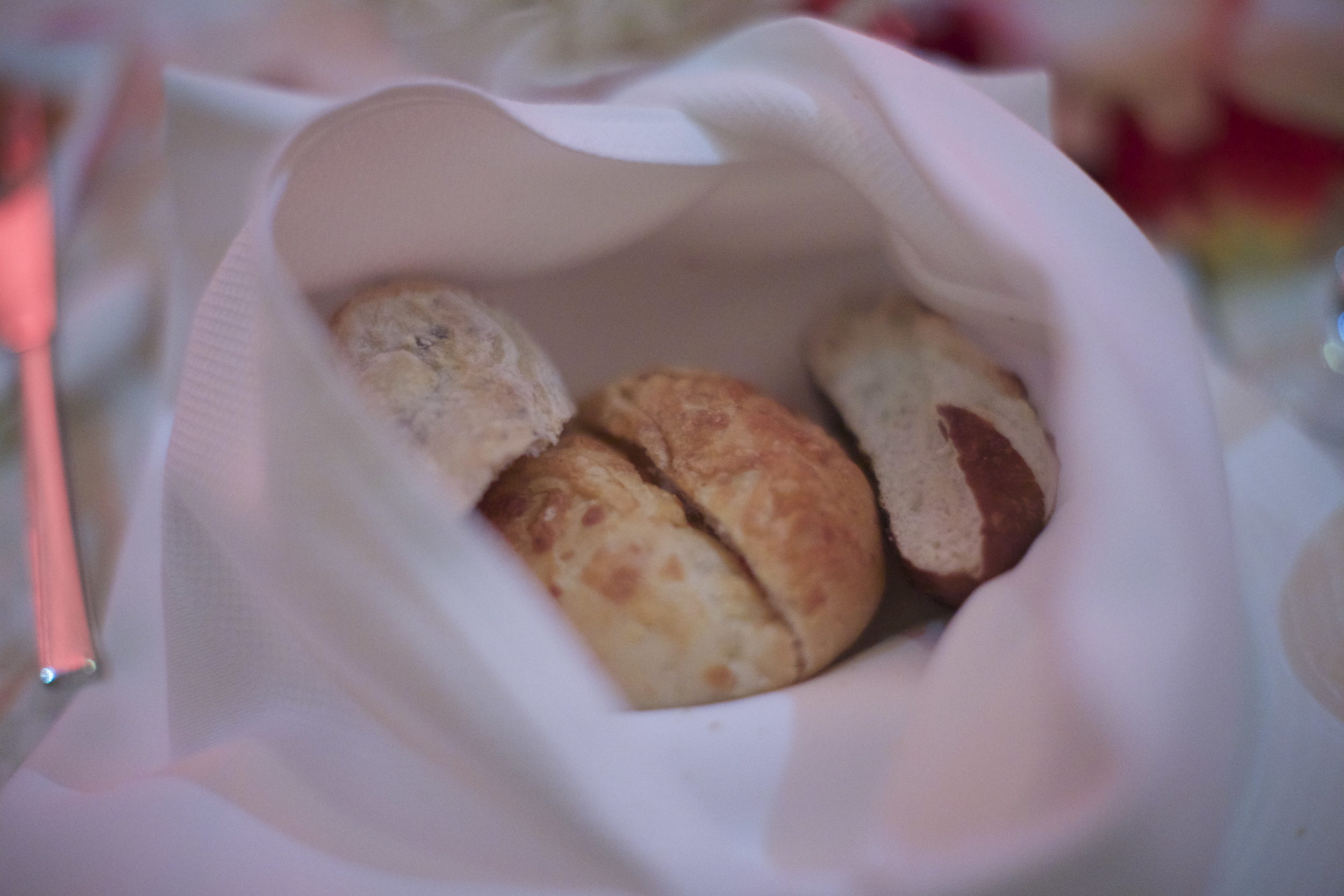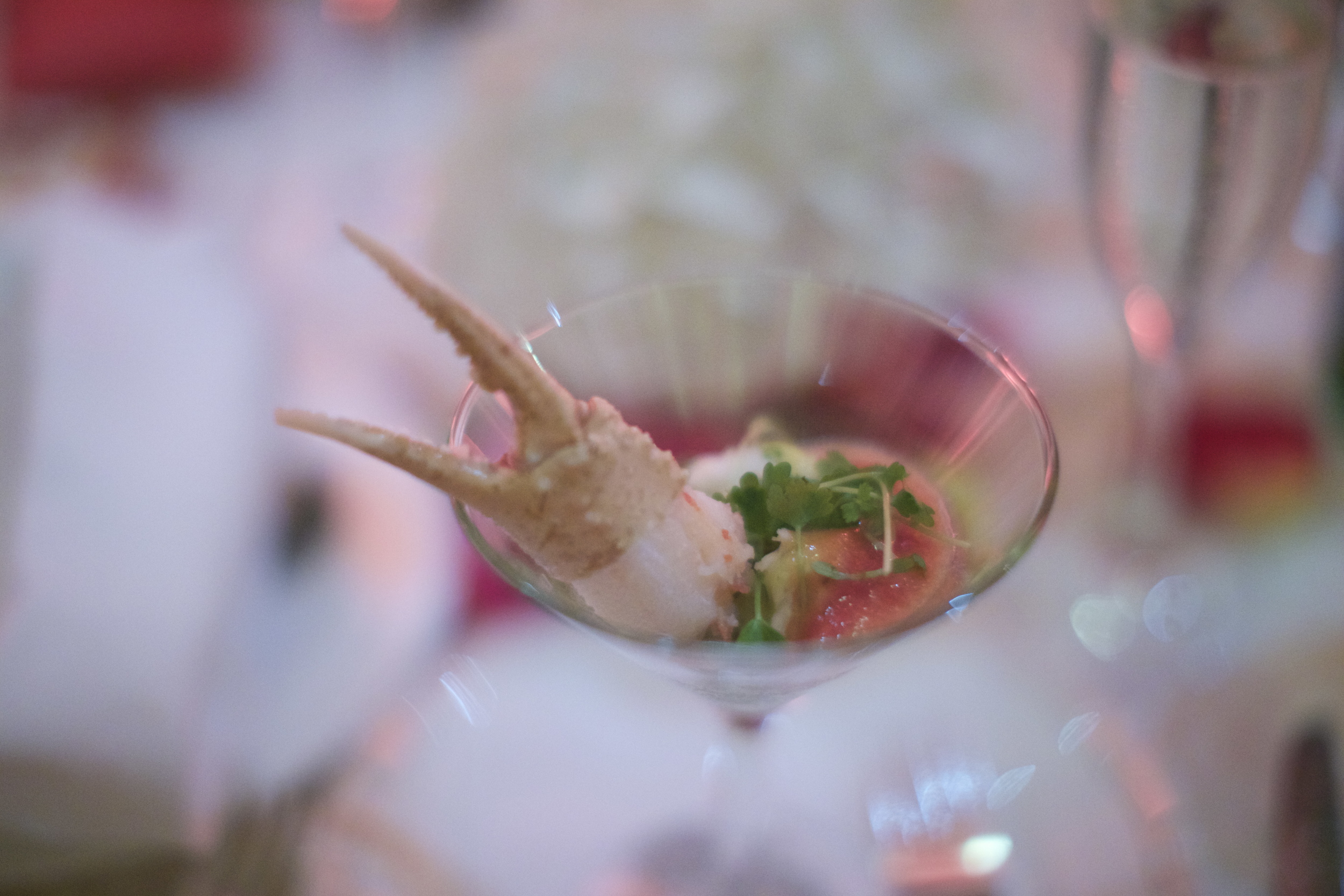Me and my wife had a wonderful time at the St.Regis in Dana Point, Ca. Everything you would expect from a Forbes 5 star, AAA 5 diamond resort was easily noticeable and some to spare. We had an ocean view (although it was in the near distance), panoramic rolling coastal hills, an incredibly beautiful golf coarse, spectacular pool and jaucuzzi, spa, good food, and more. I mean, I'm not claiming to be an elite hotel aficionado, but we had our own butler! I thought it was pretty nifty. Anyhow, our stay was for only one night, so with all that said I'm guessing we didn't get a chance to partake in the full St.Regis experience. The one experience that I do want to share with you, since I'm such a food nerd (I hope you are too), was my dinner at The St.Regis' fine dining restaurant Motif. It was Valentines day and they had a tasting menu option aside from their regular a la carte menu, which I tend to gravitate towards anyways, so we ordered two glasses of the house champagne and two tasting menus. Here's what we got!
92$ per person was quite the price. It comes with the territory and this special day, so I was prepared.
The Sonoma house champagne was quite tasty. It was full of green fruit, tart, and zesty tones with a dry finish.
The bread course was delicious. I'm always a sucker for hot bread and they made sure it was just that. They had 3 varieties: Parmesan, pretzel, and an herb. The pretzel bread was definitely the hero, but the other two were delightful.
The bread course was served with a red bean "hummus' and soft butter. I don't know if I would have put these two items on the same plate, but none the less the "hummus" was creamy, tart, and full of flavor and the butter was, well, buttery. My favorite was the red bean "hummus" with the pretzel bread. It was a taste not to be forgotten.
The amouse bouche (literally translated "amuse mouth") was a "Crab Martini" and was a solid opener for the meal. In it laid chunks of dungeoness crab meat, an avocado puree or "Mousse", and a "Blood Mary" tomato based condiment of sorts. Although I did miss the "Foam" effect of the the "Bloody Mary" sauce. Here's how the menu read:
-Amuse bouche-
Crab Martini
Lump Crab/ Avocado Mousse/ Bloody Mary Foam
Next up was the official 1st course of the meal. I'm a sucker for a good scallop, so I was particularly excited about this coarse. Unfortunately it didn't come through as much as I hoped it to. The scallop was properly seared, but surprisingly just a tad undercooked. The salsify puree was a nice touch with it's earthy flavor and silky smooth texture. The heart of palm was fresh, sweet, and meaty. The sauce was sweet/tart, buttery, and had a floral essence to it. I'm assuming it was the "Hibiscus Foam" and again I was missing the "Foam" effect on this one. As far as the "White Chocolate Beurre Blanc" went, I didn't even realize it was a part of the dish until I glanced at the menu again. I just couldn't find it on the plate! All in all this was a decent 1st coarse, conceptually speaking. Here's how the menu read:
-Course 1-
Scallop with Heart of Palm
Salsify Puree/ Hibiscus Foam/ White Chocolate Beurre Blanc
Both me and my wife chose different entree options so we could experience the full breadth of the menu and it worked out quite well... aside from her stealing the beef option before I even had a chance. Being the gentleman that I am, ahem, I politely smiled at her and happily ordered the fish option. I think she took a little joy in all of this.. Anyhow, she ordered the beef medium rare, in which it was (maybe a tad under) and was very good. The "Truffle Polenta" was truffle packed, creamy, and buttery. The asparagus were simply grilled with salt & pepper. Simplicity is always nice. To finish it all off was a pretty straight forward red wine beef jus with oyster mushrooms. Here's how the menu read:
-Entrée-
Certified Angus Beef Tenderloin
Truffle Polenta/ King Oyster Mushroom
The barramundi had a wonderful crispy crust, moist flakey texture, a clean ocean flavor, and the vanilla ginger glaze was nice. The "Forbidden Rice" was cooked perfectly and sort of had a risotto creaminess to it. I'm a big fan of romanesco (the green spiny cauliflower looking vegetable), so this was an easy in for me. The only thing about this dish that I didn't completely enjoy was the over abundance of sauce and I LOVE my sauce mind you. Other than that, this was a solid fish entree. Here's how the menu read:
Roasted Barramundi
Sea Urchin Beurre Blanc/ Forbidden Rice/ Vanilla Ginger Glaze
Both of the desserts were very themed, which is always interesting, and very whimsical. This time I took the reigns and ordered the chocolate mousse as fast as I could. This proved to be a good choice. The mousse was creamy, rich, the perfect amount of sweetness, and full of dark chocolatey goodness. The chocolate lollipop was filled with a delicious vanilla cream and the chocolate decorations were nothing less than perfect. I wasn't the biggest fan of the "Pineapple Compotee" pairing, but to each their own. Here's how the menu read:
“My heart”
Dark chocolate mousse, vanilla cream, pineapple compotee
My wife ordered the alternative dessert which was essentially a very elaborate pairing of raspberry and pistachio. I think I would have enjoyed this dessert a whole lot more if I hadn't made 5-6 batches of macarons the week before. All in all the macaron was executed very well along with everything that was sandwiched inside. Here's how the menu read:
“Mon Coeur”
Almond macaron, raspberry coulis, pistachio cream
The meal was fitting for a typical "fine dinning" Valentines day and we both enjoyed ourselves, especially with two glasses of champagne. I really wish I could say that the service was just wonderful, but we did have to wait 30 minutes for our bill (after asking for it 3 times) and it felt like that throughout the entire meal. With that said, the hotel was wonderful and the complimentary in-room tea & coffee (via our butler) the next morning was a great way to finish off our stay. Until next time St.Regis..….














